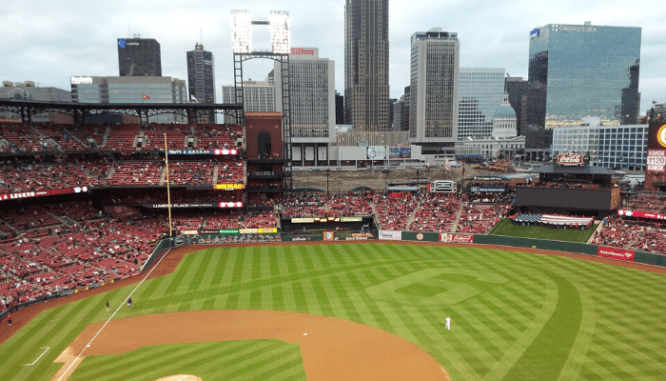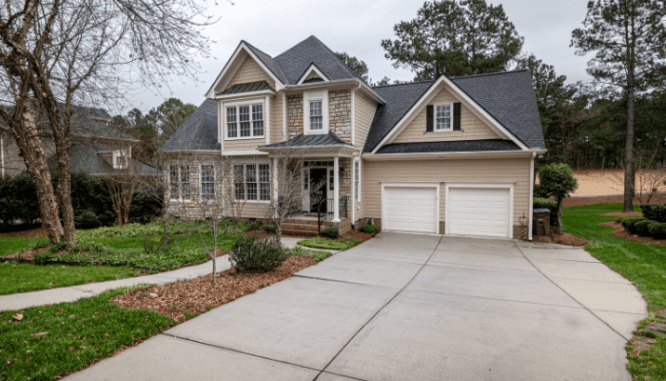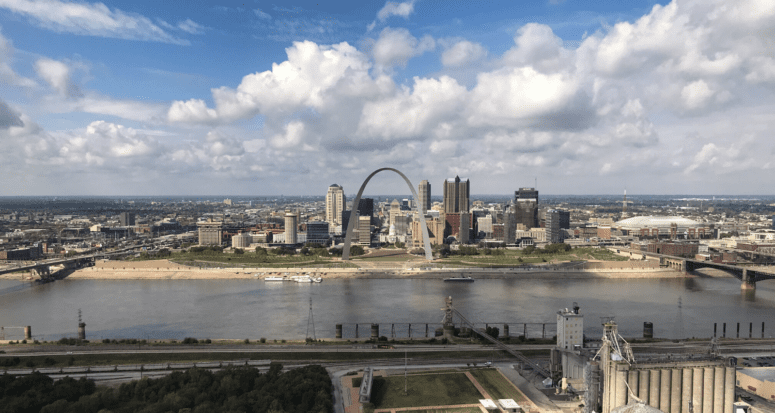How to Buy House in St. Louis: A Gateway to Getting What You Want
- Published on
- 4 min read
-
 Jaymie Greenway Contributing AuthorClose
Jaymie Greenway Contributing AuthorClose Jaymie Greenway Contributing Author
Jaymie Greenway Contributing AuthorA freelance writer and editor, Jaymie has been a buyer, seller, and builder of multiple properties in her mid-Missouri hometown. She has an education in science and 18 years of entrepreneurial experience in the food and beverage industry. Her work has been featured in publications about engineering, literature, music, non-profit organizations, and real estate. When not writing, she’s reading fantasy novels, listening to Motown, and planning her next road trip.
A national monument, a baseball dynasty, and all four seasons. The city doesn’t disappoint visitors who are looking for its more famous offerings (beer! baseball!), but as you get ready to buy a home in St. Louis, you’re in for a few refreshing surprises — and some challenges you won’t see in most markets.

Affordability in the heartland
As of January 2020, the median price of a home in the Midwest was $200,000, compared to the national median price of $266,300. The median price of a home in St. Louis and the metropolitan area? $184,400.
As for reliability of cost, “We don’t have big highs or big lows,” says Realtor Bridget Forbes, who has 11 years of experience in St. Louis.
“Compared to the East Coast or West Coast, we don’t waver too much. We tend to stay right in the middle.”
We know that other factors affect your search for the perfect home in St. Louis, like your lifestyle, your proximity to work and schools, and cost concerns like maintenance and insurance.
In St. Louis, housing is affordable. You can get what you want. Now the question is, “What do I want?”
To get your answer, you’ll need to know the area like a St. Louis native. To help you get there, we’ve looked at the numbers, talked with the experts, and broken bread with the locals to gather the knowledge you need to buy a home in St. Louis.
Beer and sports? Yes. Arts, architecture, and eclectic neighborhoods? Also yes!
The City of St. Louis
The city is (unofficially) divided into three sections: north, south, and the central corridor. St. Louis, named for King Louis IX, was settled along the Mississippi River in 1764 by French fur traders. City architecture still depicts the French influence, as well as other, more prevalent, European styles like Italianate, Neoclassical, and Greek Revival. St. Louisans pay homage to their cultural history through art; they revel in their modern-day sports history by heading downtown.
A sports town through-and-through, St. Louis is home to the Stanley Cup Champion Blues hockey team, the Battlehawks XFL football team, and the St. Louis Cardinals baseball dynasty — 11-time World Champions. The teams all play within a ten-block radius of each other downtown.
Downtown also houses one of the nation’s oldest and largest breweries, Anheuser-Busch, for whom the baseball stadium is named. Budweiser beer and Cardinals baseball are synonymous with St. Louis and its modern culture, and they leave their impact in the hearts of St. Louisans, young and old.
Central Corridor
Downtown saw focused development along a main highway artery, including two universities, the entertainment district (Powell Symphony Hall, Stifel Theatre, art and history museums, riverfront dining, and The Gateway Arch), multiple neighborhood districts, and the 1,300-acre Forest Park at the Central West End.
Forest Park: Home of the St. Louis Zoo, St. Louis Science Center, St. Louis Art Museum, Missouri History Museum, and The Muny (outdoor theatre).
The Hill: Known for its heritage, regard for family, and red-white-and-green painted structures, this neighborhood is famous for Italian restaurants and markets.
Soulard: Known for its music scene, its history, the Soulard Farmers’ Market (founded in 1789!), and its annual Mardi Gras celebration.
University City (aka U-City, aka The Loop): Famous for its eclectic vibe, concert halls, live music, boutique hotels, and for being just plain cool.
Through the years, the developmental mindset of the corridor radiated out further west, keeping with the arts and business ethos with a suburban twist. Webster Groves, Kirkwood, Crestwood, Clayton, and nearby neighborhoods are considered central corridors in real estate circles, offering city-like activities with a little more room to roam.
These municipalities place great emphasis on small, unique businesses; celebrating community through town and holiday festivals and gatherings; and acknowledging their historical worth through architecture, museums, and entertainment. They are also known for a lower crime rate and excellent schools, both public and private.
‘Out in the County’
Traipsing further out into North, South, and West Counties (or “out in the county,” as the locals say) of St. Louis uncovers the true suburbs of the metro area. Here you’ll find many of the same desirable traits of the corridor cities, like great schools and some tight-knit neighborhoods, but you won’t be as close to the action.
One exception is “across the river” (the Missouri River, that is) into St. Charles. Well into West County, St. Charles hums with activity like shopping, restaurants, and bars. It’s also home to Frontier Park, which features a trailhead to Katy Trail State Park.
Getting around in St. Louis
Public transportation
The MetroLink, with two lines and 38 stations, runs north to the airport, east over the Mississippi River into Illinois, and as far central west as Clayton. The train is perfect for getting to events downtown, or for your commute from the city to the nearer suburbs. “[The train] is not as widely used as places like Chicago or New York,” says Forbes. “But it’s great if you work downtown. Parking gets expensive.”
Highway system
Unless you are traveling from the outskirts, the comprehensive highway system around St. Louis ensures that “you are only 20 to 30 minutes from any central location or first layer of outlying counties” when traveling by car, according to Forbes.

“Neither rain, nor snow, nor heat…”
A postman’s creed is tested in St. Louis, and you can add hail, sleet, ice, and flooding to their challenges.
Now that you have the lay of the land, it’s time for some home considerations — specifically, the weather factors that affect maintenance and insurance costs. If a weather condition exists, it will occur in St. Louis. Well, aside from hurricanes. And permafrost.
The area experiences all four seasons. The winters are cold and snowy, and the summers are hot and humid (the humidity thanks in large part to the confluence of two of the largest rivers in North America).
But spring and fall are welcomed and adored by St. Louisans, who make use of the mild, breezy, sunshiney days for gardening, attending festivals, hiking, and other outdoor activities in this green-spaces-conscious city.
The weather in St. Louis can appeal to one’s sense of adventure — and provides countless conversation opportunities with strangers, especially when spring arrives. But in addition to other all-weather concerns (be sure to have HVAC systems inspected!), a prepared homeowner must consider two other important homebuying details: roofs and flooding.
Raise the roof
“We get a lot of wind and a lot of hail,” says insurance agent Matt Hashley of Hashley Insurance Group. “I work with a lot of new homeowners, and one thing I talk to Realtors about is roof inspections.”
Hashley, with more than 11 years of experience providing homeowner’s insurance in St. Louis, recommends validating the age of your roof and having it inspected for hail damage. “It’s important for people to one, document the age of the roof, and two, have an actual roofer inspect the roof,” he says. “We have enough storms that if a roof hasn’t been inspected in the last five years, it’s likely that hail damage will show up when it is.”
Flooding
During rainy springs and summers, river levels can rise. And St. Louis has some big rivers.
The rainy season can bring with it some unique concerns. First, if FEMA has designated your area as a flood zone, you must carry flood insurance in addition to your regular homeowner’s insurance, which can nearly double your insurance costs. And remember, “If you are buying in a flood zone,” says Hashley, “your lender will not lend without it.”
In other areas not specified as flood zones, it’s still a good idea to do your research. Regular homeowner’s insurance doesn’t cover exterior water coming into your home, which is considered separate from sewer and drain backups.
“In every municipality, there are areas that are prone to flooding,” says Hashley. “There are some open sewer systems and runoff systems that can’t always keep up.”
His advice? “As a buyer, be conscious of your elevation and where the nearest creeks are. If you’re at the bottom of a hill, pay attention to where the sewer drains are. Could your home or property potentially be in an area that can hold water? Then you may want to consider flood insurance.”

When to buy
With a median home price of $184,400, the market stays busy most of the year. “But,” says Forbes, “a lot of families tend to move in the summer, so it’s more competitive then. January and February tend to be less competitive, so your contracts can be less aggressive.” Take a look at our calculator for more insight on the best times of the year to buy a home in St. Louis.
Find a top buyer’s agent
In St. Louis, top buyer’s agents have saved buyers over $39,000 and maintain a higher average rate of transactions than other agents in the area — that’s a lot of season tickets to watch your favorite teams play!
Again, with affordable housing prices, the market is competitive. A top buyer’s agent in St. Louis will keep you one step ahead in terms of new listings, open-house showings, when to move aggressively and when to hold back, and how to negotiate the best possible price for your budget.
Header Image Source: (Silent O / Shutterstock)
